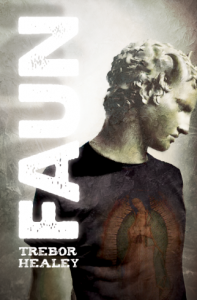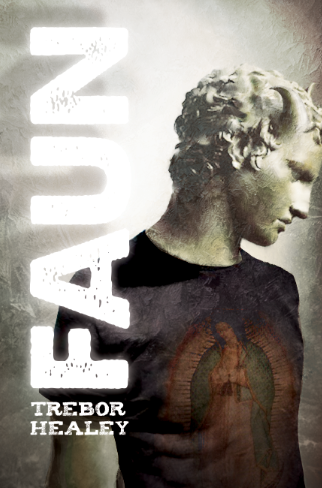 Faun
Faun
by Trebor Healey
Lethe Press. 275 pages, $18.
AT FIRST GLANCE, Faun looks like a novel for young adults. Despite being labeled “urban fantasy,” the back cover copy describes protagonist Gilberto Rubio’s rapid-onset puberty, which includes a tail, horns, and hoofs, with a lighthearted spin. And that’s fair—when Gil matures further, his sexual impact recalls the magic realism of Like Water For Chocolate mixed with the jizzy beer from American Pie. But that’s just a fraction of the story.
Gil’s mother worries about her son, buying out several Catholic supply shops and clutching a rosary in each hand, then going further and connecting with a fringe group who once tried to exorcise her pit bull. Gil runs away, first to the woods, where he meets a chat room buddy who turns out to be a satyr like himself, only elderly. As a good Catholic boy, Gil is wary of older strangers, but he and Walt bond through music, playing their pan pipes and prancing among the woodland animals. From there he leaves to mingle with street hustlers and transsexuals in the L.A. underground, trying to make a go of it on his own but more often saying the wrong thing or inadvertently causing spontaneous orgasm in the people he encounters. By story’s end, Gil has made a measure of peace with the fact that he’s not a normal boy, but he is a normal faun, which helps him find a place to call home.
Author Trebor Healey (A Horse Named Sorrow, 2012) has created an L.A. that’s similar to the fairy wonderlands in Francesca Lia Block’s “Weetzie Bat” books. Like those, this will appeal to teenage readers, but Faun has much to say to adults as well. Gil is the rare teenage boy who is not especially interested in sex, but his sexual energy charges everyone he encounters before reversing and causing him orgasms of mythic proportion. (“He experienced visions of bright orange poppies blossoming by the millions, a tangerine wave of them advancing down the golden baked grassy hills of the Grapevine like a flood.”) These scenes are sensual, funny, and frightening at once. It’s pure comedy when one of Gil’s erections rip the pants right off of him, but he’s fearful of hurting anyone, and only once is his arousal in response to attraction (he floods the woman’s swimming pool, and his semen’s magical powers pay forward after he’s gone). Marital discord is a recurring theme, and Gil’s magic affects several couples in various ways that get detailed subplots in the book.
Faun is bold on the page and may offend some readers: Gil refers to “queers” and “trannies,” is put off by the erections he causes in other men, and assumes all older men are potential child molesters (a holdover from his Catholic upbringing). Of course, he’s also fifteen years old and just found out he’s a living myth, so cutting him a little slack seems only fair. Healey’s choice to write about such profound otherness in a character raised to be homophobic and transphobic makes the futility of such fears stand out.
“The Christian marketplace was saturated with hate, and it had become like selling Crocs. Everybody already had a pair—why keep hawking plastic shoes? Besides, people weren’t really that hateful; they were terrified.” The church’s rush to help Gil’s mother, Lupita, is full of twisted humor. The fact that she may have given birth to the devil himself is little more than something they can use for marketing outreach to new parishioners. At one point Walt tells Gil he thinks Christians aren’t good or bad, just “afraid, and they’ve got some warped ideas.” His protection lies in playing music so lovely it stops violence before it can escalate. When we last see Gil, he is playing his own tune on his mentor’s pipes and preparing to learn how to survive on his own in a forest that now feels like home. Faun crashes fantasy headlong into reality, and the result might leave a bruise on your heart.
________________________________________________________
Heather Seggel lives and writes in Ukiah, California.






